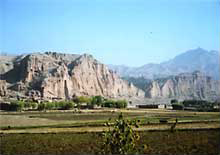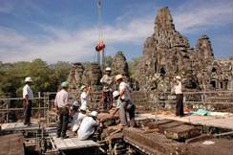Cooperation with International Organizations (UNESCO,UNU)
Preservation and Restoration of Tangible Cultural Heritage
Outstanding Cultural Heritage is a precious legacy that is shared by all people across national borders, and must be passed down to future generations. However, all around the world, a great number of Cultural Heritage properties are in danger of destruction and extinguishment. Once lost, their restoration is tremendously difficult, making their preservation all the more urgent.
In the 1988 speech by then-Prime Minister Noboru Takeshita in London, Japan announced a framework for international cooperation in order for Japan to fully contribute to the world. Japan designated strengthening of international cultural exchanges as one of the three pillars of Japan’s plan of cooperation. Toward that goal, Japan established the Japanese Funds-in-Trust for the Preservation of World Heritage in UNESCO in 1989 to support the preservation of Cultural Heritage around the world. Furthermore, Japan established new Japanese Funds-in-Trust in order to meet the diverse needs of the international community. Since 1989 until the present day, Japan’s contribution to the Funds-in-Trust amounts to approximately US$75 million in total, and preservation and restoration projects have been implemented at 46 properties of Cultural Heritage in as many as 64 countries. Japan has made various efforts in those projects, from dispatching Japanese specialists to specific construction sites to preserving and restoring properties as well as to supplying machinery and materials. Japan truly values and prioritizeefforts to foster human resources toensure preservation and restoration in a sustainable manner.
The projects to preserve and restore the Angkor monuments in Cambodia and the Bamiyan ruins in Afghanistan, which have been carried out as a part of post-conflict cultural reconstruction assistance, are flagship projects of Japan's contributions in this field.
These projects utilize the world-class preservation skills that have been developed in Japan by involving Japanese specialists. By implementing the project together with relevant local institutions, Japan ensures that its skills are transferred to the local people, enabling them to protect the Cultural Heritage of their country with their own hands in the future.
 Bamiyan ruins
Bamiyan ruins Angkor monuments
Angkor monuments Restoration of the Bayon
Restoration of the Bayon
(Bayon Temple, Angkor)
(c)Japan APSARA Safeguarding Angkor

